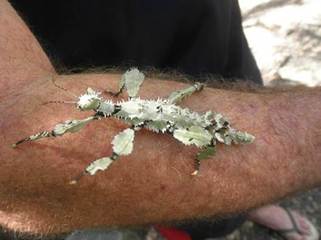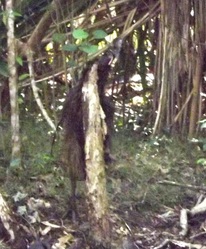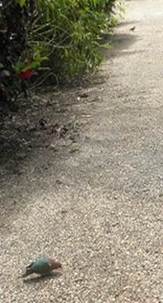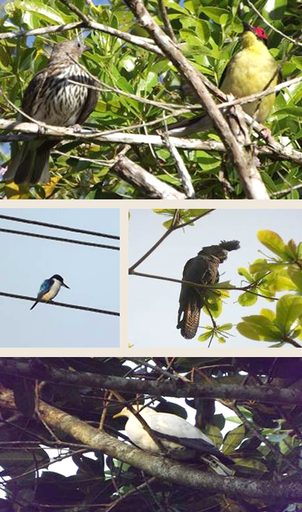
The rainforest of the Wet Tropics are mysterious and wonderful and full of rare plants. The unusual climbing supplejack forms green towers as it climbs up its host tree in search of the light above the canopy. The flower is fragrant and is followed by grape like bunches of reddish fruit. “ Aboriginal people used the plant to make strong rope for climbing and the stems were woven into fish and eel traps or used to sew together bark canoes”. This information is from John Beasley’s book Plants of Tropical North Queensland If you live near rainforest please look carefully and you may see more of these plants in flower.

Bill has gone to Sydney, his mother died this week and on behalf of all of us, on this group email, Bill, we extend our thoughts and support to you and Kerry at this time.
When Bill comes back to the rainforest hopefully he will add some comments on missionbeachcassowaries.com about this incredible creature.

The meticulous cleaning behaviour changed in a flash and without any signal ‘Little Runt’ threw himself aggressively at a nearby tree-stump.
He clawed the tree stump with his feet, kicking it many times. From the front, then with a rear kick. He rode the tree-stump seemingly climbing onto it and it kicking it viciously as he played.
His clean feathers were soon covered with bark.

The male emerald doves have reached a comprise. They have divided up the yard: one stays around the front near the beach the other dove has claimed the territory around the nursery.
Occasionally they come together on the road but the front bird retreats back quickly.
I have not seen the female all week. Hopefully she is nesting.

The male fig-bird continues to sing to the female but there has been no sign of nest building.
Every afternoon the sacred kingfisher positions himself on the power lines over the road and watches for anything that moves in the grass below. His mates are generally in the mangroves using a vantage point on a high branch. This modern bird however, prefers the power-lines.
Only a few black cockatoos are still in the area. This very old female flies with another three males. She is often left behind when the boys take to the air.
The echoing of the nutmeg pigeon’s cooooo- can be heard late in the afternoon. I regularly see three birds in my patch of rainforest. This is dramatically down from pre-Larry and even post- Larry: I n the past I saw over 20 birds every day around Coquette Point. However, I often see a large flock of Nutmegs flying into the Ella Bay rainforest.
Signing off from the mysterious forests of Coquette Point,
Cheers Yvonne C.




